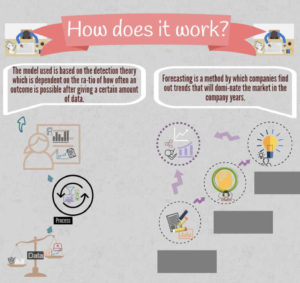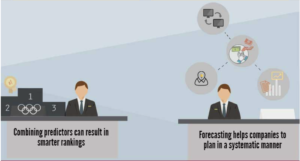
Transform Your Supply Chain Planning and Marketing Strategies with Google Cloud and SAP Integration

Transform Your Supply Chain Planning and Marketing Strategies with Google Cloud and SAP Integration
August 9, 2021 | Divya Khare
Blog / Prediction Vs Forecasting: All you need to know
The predictive aspect of AI has become more refined and accurate with time. AI driven solutions have helped organisations digitally transform their businesses in numerous ways. For example: by building ML models to predict the demand and manage inventory accordingly. However, the question arises is, if prediction and forecasting are the same?

Artificial intelligence vector illustration of scientists men building human head with cogwheels and wires. Digital brain or android robot mind development technology
Prediction is an estimation of events happening in the past, present and future whereas Forecasting is always associated with a time dimension in the future. It can be noted that forecasting is an estimation process for some specific future duration or over a period of time.
While they sound similar, they are actually different problem solving techniques. Let us understand both with examples. Forecasting is estimating how many revert calls a product analyst might get the next day when he has presented a demo of a particular product to say, 10 customers. If the analyst assumes that about 4 customers will definitely call back, that means he is forecasting based on his experience with each one of those customers during his demo interaction with them. Forecasting comes with logic.
On the other hand prediction is a form of artificial intelligence that uses data mining and probability to forecast on a more granular level with specific outcomes. For example, prediction could help us identify the number of customers who will be willing to buy our next product in a certain fixed time period. This can be estimated on the grounds of compiling the user data and analysing the behaviour of the customers towards a certain product.
What does your business need? Prediction or Forecasting?
Both Prediction and Forecasting can help you grow your business with the analysis capabilities.



There can be challenges in forecasting in finding the number of events that have occured in the past which is a necessary element to make predictions. Nevertheless both forecasting and predictions are future-oriented processes that determine future events using scientific methods.
Pluto7 has been actively forecasting demand for a number of customers with an accuracy rate of approximately 90+% in many cases depending on data availability and baseline being at 70%.